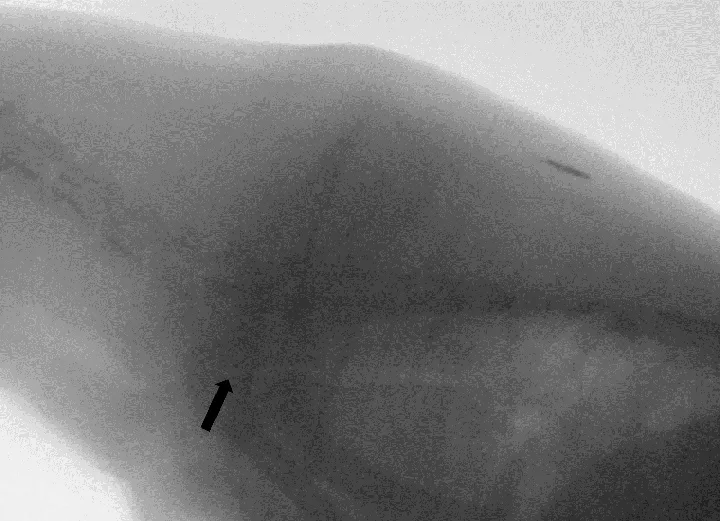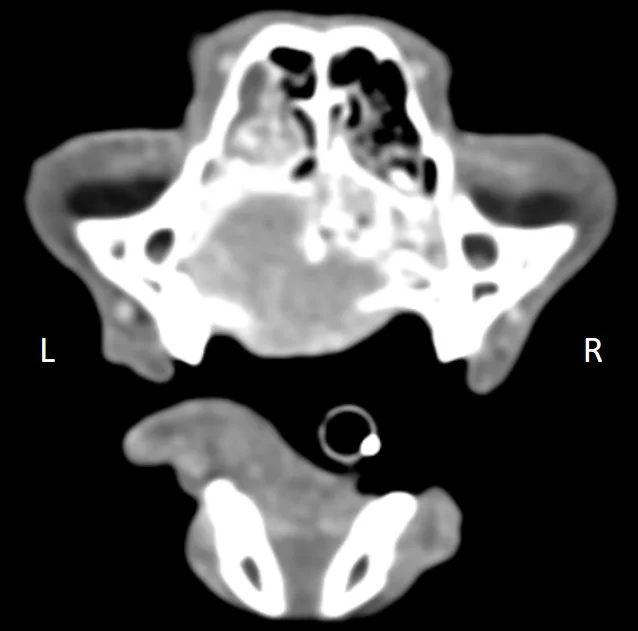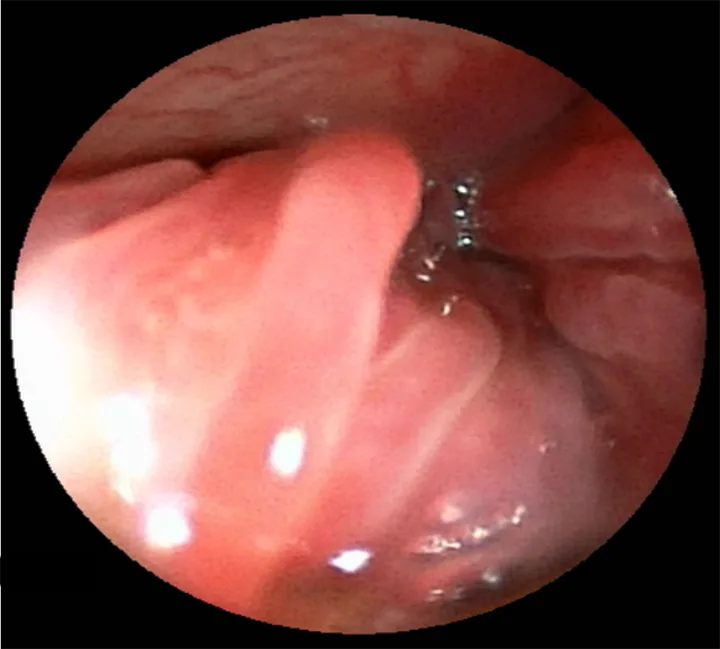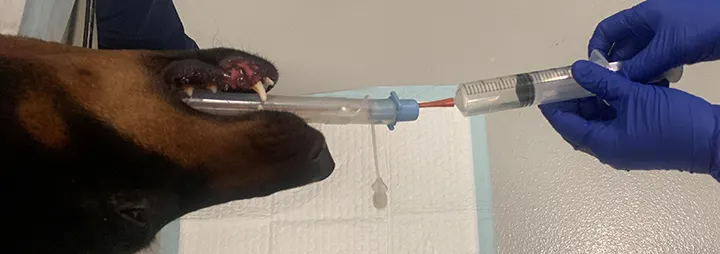Top 5 Respiratory Diagnostics
Tekla Lee-Fowler, DVM, MS, DACVIM, Auburn University

Evaluating respiratory disease can be challenging, and multiple diagnostics may be required for diagnosis. Patient history and physical examination should be followed by appropriate advanced diagnostics.
Following are the 5 most common methods for diagnosing respiratory disease, according to the author.
1. History & Physical Examination
General patient history should be supplemented by a respiratory-focused history that includes onset, duration, and character of respiratory signs, as well as changes in these parameters and other respiratory or systemic signs. Questions regarding systemic signs, including GI (eg, vomiting, regurgitation) and gastroesophageal reflux (eg, lip licking, repetitive swallowing, neck extension) signs, should be based on the presenting complaint.
Focused examination for stabilization, initial treatment, and diagnostics may be needed before complete physical examination in patients with respiratory distress and can provide specific information about the area of concern. For example, in a patient with nasal discharge, character of discharge, whether discharge is unilateral or bilateral, airflow, ocular retropulsion, dental disease, respiratory sounds (eg, stertor, stridor), and depigmentation, symmetry, and pain on palpation of the nasal planum, surrounding facial structure, or bridge of the nose should be determined.
In patients presented for cough and/or respiratory distress, respiratory sounds apparent with a stethoscope (eg, crackles, wheezes, increased or decreased bronchovesicular sounds) and without (eg, stertor, stridor) should be noted along with increased effort during a particular respiratory phase. Stertor and stridor are inspiratory sounds associated with the upper airway; stertor indicates nasopharyngeal disease (eg, nasopharyngeal polyp in a cat), and stridor indicates disease of the larynx and upper trachea (eg, laryngeal paralysis). Crackles are an inspiratory sound mainly associated with disease in the pulmonary parenchyma and can also be associated with terminal bronchiole collapse and mucus accumulation. Wheezes are typically appreciated on exhalation and likely indicate lower airway narrowing. Diminished bronchovesicular sounds are associated with disease of the pleural space.
Phase of maximal respiratory effort can be inspiratory, expiratory, or mixed. Upper airway disease and pleural disease are often associated with increased inspiratory effort, and lower airway disease typically results in increased expiratory effort. Pulmonary parenchymal disease can be associated with increased inspiratory, expiratory, or mixed effort. Disease affecting more than one location in the airway should be considered when mixed effort is noted.
2. Imaging Radiography
Thoracic radiography can help investigate respiratory disease and is widely available. Radiographs can help determine disease location and extent, as well as concurrent abnormalities; however, sensitivity is reduced with small or subtle lesions.
Three-view radiography (ie, left lateral, right lateral, ventrodorsal) is recommended, particularly when neoplasia is suspected.
Inspiratory and expiratory films that include the cervical trachea can help identify dynamic airway collapse in patients with suspected tracheal collapse; however, sensitivity and specificity varies by airway location (eg, trachea, bronchial segment), and false negatives and false positives are possible.1
Nasal radiography is nonspecific and can identify destructive rhinitis but is less sensitive than nasal CT. A full set of images should be obtained with the patient under heavy sedation or general anesthesia. Advanced imaging is required for staging and treatment planning, particularly when nasal tumors are suspected.
Dental radiography is recommended when dental disease is suspected as an underlying cause of nasal clinical signs.
Fluoroscopy
Fluoroscopy can be used to assess dynamic airway collapse (eg, intra- and extrathoracic tracheal collapse, bronchial collapse; Figure 1) and should be performed during normal respiration and after cough induction.1 Fluoroscopy can also help evaluate for upper airway conditions (eg, pharyngeal collapse, epiglottic retroversion). Videofluoroscopic swallow studies evaluate aerodigestive disorders (ie, conditions affecting the upper GI tract and respiratory tract) that result in micro- or macroaspirations.2 Fluoroscopy has limited availability.

Fluoroscopic image of a 12-year-old neutered male Yorkshire terrier with severe tracheal collapse at the thoracic inlet (arrow) during normal respiration
Ultrasonography
Emergent and focused thoracic ultrasonography methods can identify pleural effusion but are less consistent for identifying pneumothorax.3-5 Image patterns can help narrow the differential diagnosis list for parenchymal and pleural conditions.3,6 Ultrasonography can evaluate for pulmonary edema, mediastinal masses, and pulmonary masses near the thoracic wall, as well as guide pleural effusion and pulmonary mass sampling.
CT
CT of the nasal cavity can help determine extent and location of disease, presence or absence of turbinate erosion, involvement of sinuses and surrounding tissues (eg, lymph nodes), dental arcade involvement, presence of some types of foreign material, and integrity of the cribriform plate (Figure 2); it can also guide sample acquisition and treatment planning. CT can be performed with the patient under heavy sedation, but general anesthesia may be preferred, depending on scanning time required and whether additional procedures are planned.
Thoracic CT can provide information regarding the airways, parenchyma, and thoracic cavity and should be performed using inspiratory and expiratory breath holds with the patient under general anesthesia.7 Specialized equipment (eg, restraint device that maintains nonanesthetized small animal patients in a sternal position) is available for patients unable to undergo general anesthesia8,9; however, limitations (eg, movement artifacts, lack of inspiratory images) can make interpretation difficult.

Nasal CT image of a 12-year-old neutered male domestic shorthair cat with a heterogeneous contrast-enhancing mass in the left nasal passage and extension into the right nasal passage causing bony destruction of the hard palate and nasal septum
3. Airway Evaluation
Upper Airway Examination
Laryngeal examination involves direct visualization of the arytenoid cartilages with concurrent identification of inspiration occurrence by an assistant. Arytenoid cartilages should abduct on inspiration. Premedication is not usually recommended; however, premedication with acepromazine and butorphanol followed by induction with propofol or alfaxalone to effect administered to healthy dogs in conjunction with doxapram may improve examination quality without significantly impairing laryngeal function.10 Intubation after doxapram administration may be more frequent in dogs with laryngeal paralysis.11 The oropharynx and larynx should also be visually inspected, especially the position of the epiglottis with the tongue in a relaxed position.
Rhinoscopy
A rigid or flexible rhinoscope can visualize nasal passages, and flexible rhinoscopy can achieve retroflexed views of the nasopharynx (Figure 3). Rhinoscope-guided biopsy may be possible, depending on the size and type of scope compared with the patient. Blind biopsy can be performed if guided biopsy is not possible and should ideally be based on CT and/or rhinoscopy images.

Rhinoscopy image of mildly erythematous turbinates in the left nasal cavity of an 11-year-old spayed Australian shepherd with lymphoplasmacytic rhinitis
Tracheobronchoscopy
Tracheobronchoscopy can inspect mucosal surfaces of the trachea and lobar bronchi to evaluate mucosal appearance, secretions, and structural abnormalities (Figure 4). This procedure may reveal dynamic airway collapse not identified on thoracic radiography or fluoroscopy; however, anesthesia and inability to cough during the procedure may impact the amount of collapse appreciated.

Tracheobronchoscopy image of the carina in an 11-year-old spayed Australian shepherd presented for cough. Mucosa is erythematous, and blood is present at the level of the carina, extending down the left caudal lobar bronchus.
4. Airway Sampling, Aspiration, & Biopsy
Airway Sampling
Transtracheal wash can be used to sample the proximal respiratory tract in medium and large dogs with mild sedation, which allows the patient to cough during the procedure, potentially increasing sample return. Patients that are aggressive, extremely anxious, or experiencing respiratory distress are not good candidates for transtracheal wash. Hemostatic abnormalities and severe pyoderma of the neck are also contraindications.
Endotracheal wash can sample the proximal respiratory tract with the patient under brief anesthesia. A sterile red rubber catheter should be advanced down a sterile endotracheal tube to the level of the carina; sterile saline can then be introduced and aspirated.
Bronchoalveolar lavage (BAL) can be performed via bronchoscopic guidance or blind technique. With blind BAL, a sterile red rubber catheter should be prepared by removing the distal end above the side ports with a sterile blade. The catheter can then be advanced down a sterile endotracheal tube until it is gently wedged in the lower airway. A syringe of sterile saline should be attached to the catheter, saline instilled, and the sample aspirated (Figure 5). The author uses a total sterile saline volume of 2-4 mL/kg that is typically divided into smaller aliquots for multiple samples (typically, 10-mL or 20-mL aliquots, depending on patient size). The catheter should then be withdrawn from the endotracheal tube. BAL provides a wash of the lower airway and alveoli. Bronchoscope-guided BAL is recommended if a sample from a specific area (eg, lobar pneumonia) is needed.

Sample aspiration during blind BAL
Other bronchoscope-guided sampling techniques (eg, bronchial brushing, biopsy, transbronchial fine-needle aspiration) can be used to sample lesions visualized via bronchoscopy.
Airway wash samples should be submitted for cytologic evaluation as well as aerobic, anaerobic, and Mycoplasma spp cultures.
Aspiration
Fine-needle aspiration of lung tissue can be used to obtain samples in patients with diffuse parenchymal (eg, neoplasia, fungal infection) or focal (eg, masses) disease. Ultrasonography or CT can improve aspiration of challenging lesions.
Biopsy
Definitive diagnosis of many interstitial and neoplastic diseases requires lung biopsy, which can be achieved via several techniques (eg, thoracotomy, thoracoscopy, keyhole lung biopsy).12,13 Complications of lung biopsy can depend on technique; however, pneumothorax and pulmonary hemorrhage can occur with any technique and may require postoperative management.
5. Pulmonary Function Assessment
Pulse oximetry and capnography assess basic pulmonary function and are widely available. Arterial blood gas measurements (eg, partial pressure of arterial oxygen, partial pressure of arterial carbon dioxide) are less available and difficult to obtain but provide in-depth information about gas exchange that can help with comparative lung function evaluation and disease monitoring.
Pulmonary mechanic measurements (eg, airway resistance, compliance) express lung function by evaluating pressure and flow in the airway via specialized techniques (eg, plethysmography, ventilator-acquired pulmonary mechanics) and are predominantly used in research settings.
The 6-minute and 1,000-meter walk tests can objectively assess exercise tolerance and evaluate disease progression or response to treatment (Table). No special equipment or training is required.